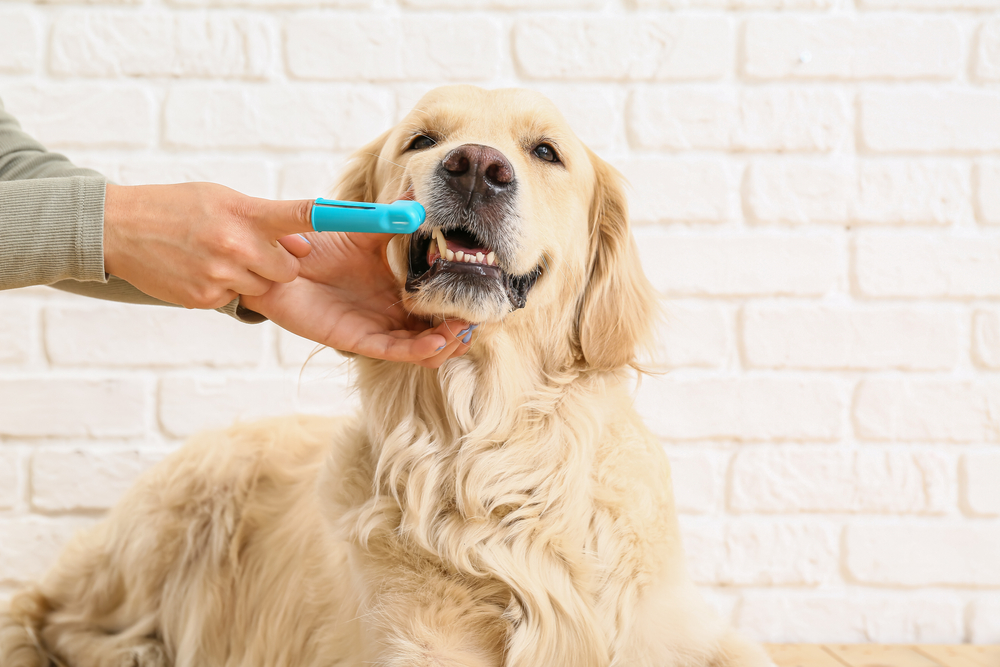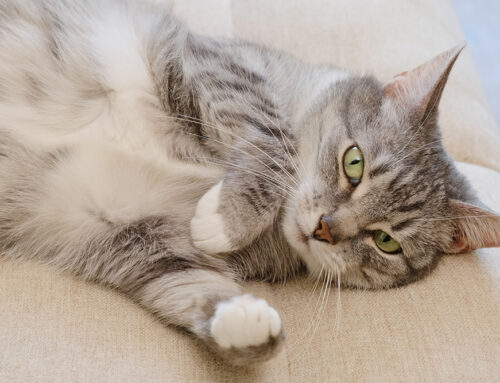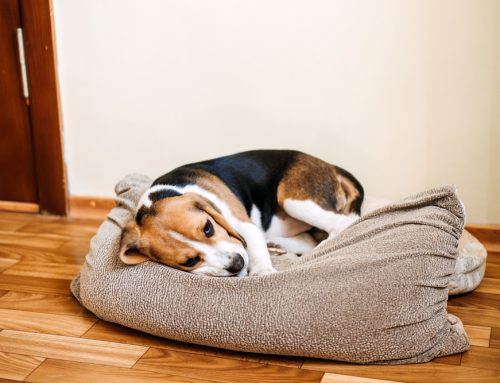Routine professional veterinary dental cleanings are necessary to prevent periodontal disease, which is a prominent problem in pets, and can significantly impact your pet’s health. Our team at Willow Wood Animal Hospital wants to explain the steps involved in this procedure, so you will know what to expect when your pet comes for their appointment.
#1: Your pet will receive a physical examination
We will perform a thorough physical examination on your pet, to ensure no health issues are present that need addressing before your pet’s dental procedure. Our veterinary professionals also take the extra step to perform an electrocardiogram, which is evaluated by a board-certified cardiologist, because your pet’s safety is our primary concern.
#2: We will run blood work on your pet
We will also perform a complete blood count, to assess your pet’s white and red blood cells, and platelets. This test provides valuable information concerning your pet’s immune status. Additionally, we will perform a biochemistry profile to evaluate the functional capacity of several critical organs and systems, especially your pet’s liver and kidney function.
#3: Your pet will be placed under general anesthesia
General anesthesia is necessary during a professional dental cleaning for several reasons:
- Safety — Sharp instruments are used to effectively clean your pet’s teeth, and anesthetizing your pet ensures they aren’t injured or unduly stressed during the procedure.
- Thoroughness — We would not be able to take X-rays or adequately clean your pet’s teeth and under their gum line if they were awake.
- Cooperation — Your pet is much more cooperative for our veterinary professionals when they are asleep, and their vitals are closely monitored by a dedicated technician anesthetist for the duration of your pet’s procedure and as they recover.
- Pain control — We are able to provide proper pain relief while your pet is under anesthesia. Pain medications also allow us to use less anesthesia.
#4: Your pet will receive a thorough oral examination
We will examine inside and out the structures of your pet’s mouth, including their lymph nodes, maxilla, mandible, and the soft tissues. Each tooth is evaluated individually for any evidence of abnormality, and a probe is used to check six areas around each tooth for periodontal pockets, which helps determine if your pet has periodontal disease. All findings are recorded on your pet’s dental record.
#5: We will take dental X-rays of your pet
Only about half of your pet’s tooth structure can be observed with the naked eye, so dental X-rays are necessary to accurately assess your pet’s periodontal health. We perform the X-rays while your pet is under general anesthesia to ensure we get good views, and to keep your pet from being anxious or stressed.
#6: Your pet’s teeth will be cleaned
Food particles that remain in your pet’s mouth after a meal attract bacteria, which form plaque on your pet’s teeth. Your pet’s saliva contains minerals that cause this plaque to harden, forming tartar. In addition, the bacteria can invade under your pet’s gum line to damage the structures supporting your pet’s teeth, which can lead to significant oral pain, tooth root abscesses, loose teeth, and, in severe cases, a jaw fracture. The bacteria can also enter your pet’s bloodstream, travel to their organs, and significantly damage their heart, kidneys, and liver. Our veterinary professionals use dental scalers to remove the plaque and tartar from your pet’s teeth, and from under their gum line, to prevent the bacteria from causing these problematic issues. Any dental abnormalities will also be addressed at this time. Periodontal disease progresses in four stages, and any tooth in stage four has lost more than 50% of the supporting structures and must be extracted, to prevent pain and further complications for your pet.
#7: Your pet’s teeth will be polished
When your pet’s teeth are scaled to remove plaque and tartar, microscopic rough etchings remain on the tooth surface, where bacteria can easily adhere. We polish your pet’s teeth to ensure the surface is smooth, and thoroughly rinse your pet’s mouth. Then, we move your pet to a quiet area to wake up from anesthesia.
#8: Your pet needs at-home dental care

An at-home dental care plan is the final step in a professional veterinary dental. Plaque can start forming on your pet’s teeth in as little as six hours, which means your pet needs daily attention to keep their mouth clean and healthy between professional cleanings. Steps you can take to promote your pet’s dental health include:
- Brush their teeth — Daily toothbrushing is a great way to keep your pet’s mouth healthy. While this process can’t effectively clean under the gum line like a professional cleaning, daily brushing removes the food particles that attract bacteria. Ensure you use toothpaste formulated for pets, since human products are dangerous for pets. Go slowly, to let your pet get used to the procedure, and offer lots of praise and treats when they allow their teeth to be brushed.
- Offer dental chews — Chewing on appropriate chew toys and treats can remove some plaque and tartar. Look for the Veterinary Oral Health Council’s (VOHC) seal of acceptance, to ensure the product is effective at reducing plaque and tartar.
Regular professional veterinary dental cleanings are an important part of your pet’s health care plan. If you would like to schedule a professional dental cleaning, contact our team at Willow Wood Animal Hospital, so we can ensure your pet’s smile is camera ready.







Leave A Comment